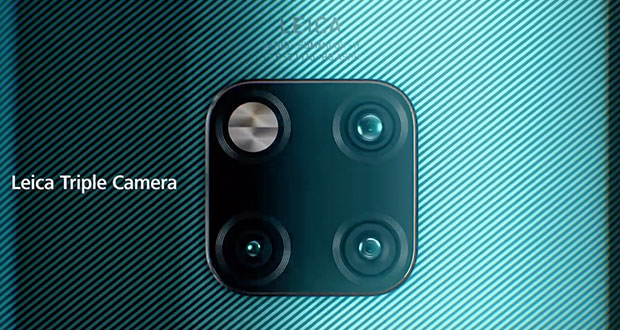Huawei Mate 20 Pro: how the ” triple ” camera of the new top of the range will work
A few days to the presentation of the new family of Huawei Mate 20. Thanks to the code of the EMUI 9 ,it was possible to understand how the triple camera in smartphones will work.
Huawei present new Mate series to the whole world and in particular, the new Mate 20 and Mate 20 Pro, which according to the latest rumors should have technical specifications and not just real top-of-the-range products. In advance of the presentation of the new smartphone of the Chinese company, you know very many features and above all are already turned on the Web even many images of how, aesthetically, should be smartphones.
Huawei Mate 20 Pro will have a triple camera at the rear ready to take the reins of the P20 Pro, the company’s first smartphone to place three different sensors at the rear of a mobile device, and raise the quality to an even greater level than seen so far. How to do? According to what was discovered in the code of the new EMUI 9, the rear photographic module of the Mate 20 Pro will have some features never seen before in the P20 series and beyond.
Huawei Mate 20 Pro: How will the triple camera work?
Huawei Mate 20 Pro will have three photographic sensors on the rear in a central position and in a solution very different from the ” traffic light ” made with P20 Pro. Yes, because in this case you will have a square predisposition with the positioning of the LED flash together with the classics sensors.
Huawei Mate 20 Pro should be in possession of a 40 MPx RGB main sensor which will be joined by a second 20 MPx sensor in the usual Monochrome and finally the third sensor will be an 8 MPx with telephoto functionality and 3X optical zoom. For the Huawei Mate 20, the camera will be 20MPx, 12 MPx and finally 8 MPx.
 What will be added and that has been discovered in the code of the EMUI 9 is the presence of a new mode called ” Underwater Mode ” ie the theoretical ability for the Mate 20 Pro to take photographs with the smartphone while diving, then under water, by pressing simply the ” down ” volume button.
What will be added and that has been discovered in the code of the EMUI 9 is the presence of a new mode called ” Underwater Mode ” ie the theoretical ability for the Mate 20 Pro to take photographs with the smartphone while diving, then under water, by pressing simply the ” down ” volume button.
Not only because users can also record videos, always underwater, by operating in this case the volume ” up ” with the addition of taking pictures while recording simply by pressing the on / off button.
Another new discovery is the so-called AI Cinema that should recognize, thanks to the presence of Kirin 980 and the ” dual ” Neaural Processing Unit, objects or even subjects in automatic and apply specific filters even during video shooting.
A step forward compared to what has been done with Huawei P20 Pro. Not only because with AI Cinema activated, the user can also use the AI Zoom or the functionality that guarantees for 1080p videos a precise level of zoom able to maintain the subject is always at the center of the scene. Also present the ability to implement in the videos the ” Bokeh ” effect that is to blur the background with respect to the subject in real time.
Many interesting and original multimedia features that we cannot wait to discover with the presentation of the new Huawei Mate 20 and 20 Pro that we remember will be unveiled in London on October 16th in an international event.
Also to be emphasized the expectation of smartphones according to their design that according to the images should be strongly ” borderless ” in the front with a display including notch but also with a high tapering of the frames. Among the specifications also the presence of 6 or 8 GB of RAM and an internal storage starting from 128GB in addition to the battery from at least 4,200 mAh and immediately Android 9.0 Pie.
Product prices and availability are subject to change. Any price and availablility information displayed on Amazon at the time of purchase will apply to the purchase of any products.

